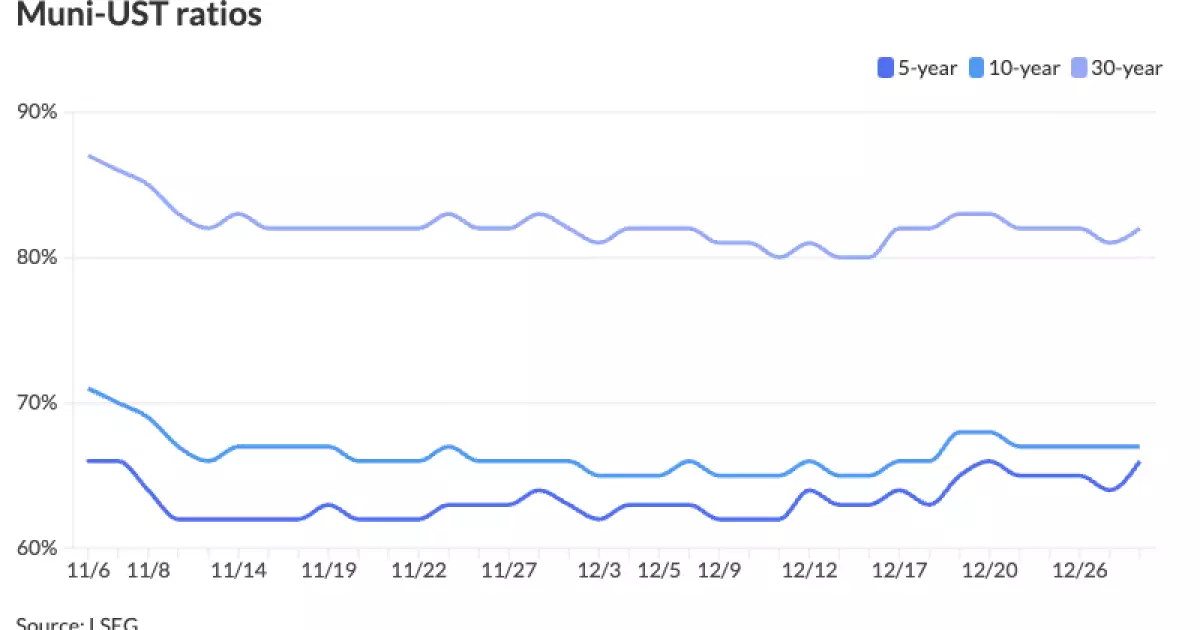The realm of municipal bonds (munis) and U.S. Treasury (UST) yields has become increasingly complex, especially as we navigate the current economic landscape. Market participants must remain vigilant as they gauge performance, outlook, and potential risks associated with these securities in both short- and long-term scenarios.
Current Market Dynamics
Recent trading sessions have seen municipal bonds exhibit a slight strengthening against a backdrop of declining UST yields. The yield movements indicate a moderate interplay between munis and USTs, demonstrating a nuanced relationship where munis generally lag behind UST performance but manage to outperform taxable equivalents thus far in 2024. Specifically, year-to-date returns reveal that munis have recorded a return of +0.73%, contrasting sharply with UST’s +0.23%. This divergence raises questions about the underlying demand for munis and the reasons behind this persistent outperformance relative to their taxed counterparts.
According to the latest readings from Municipal Market Data (MMD) and ICE Data Services, the ratios of municipal to UST yields reveal persistent strength. The two-year and five-year ratios remain stable at 66%, while the 30-year ratio slightly lags behind at 80%. Such metrics are vital for investors to calibrate their strategies regarding risk versus return in fixed-income investments.
Looking ahead, investment-grade (IG) indices have entered 2024 at elevated valuations, causing analysts like Barclays strategist Mikhail Foux to express caution. Foux highlighted the “rate path” as a critical factor impacting future performance, particularly since the backdrop includes significant losses in December that could influence investor sentiment. The significant underperformance of IG returns during UST sell-offs underlines the vulnerability of these securities amid a changing rate environment.
Additionally, high-yield munis have shown more resilience with returns for the year reaching 5.98%, despite encountering losses this month. This dynamic illustrates a potential shift in investor preferences, where yield becomes paramount in decision-making, particularly for high-yield opportunities. The prevailing market sentiment suggests that while there are positive tailwinds—including appealing yields—investors may need to prepare for increasing issuance and policy uncertainties, which complicate forecasts.
The trajectory for 2024 points towards heightened supply levels in the muni market, with projections reaching between $450 billion and $500 billion. Market dynamics suggest that this influx might result from various strategic drives: infrastructure needs across states and localities, and issuers looking to preemptively navigate any potential changes to tax exemptions. Such moves arise particularly in the wake of the new Congress, with financial strategies needing adjustment alongside legislative evolution.
Portfolio managers like Jeremy Holtz stress that while attractive yields are expected to stimulate demand, an equally significant concern lies in the threat to the tax-exempt status of munis. The possibility of legislative changes can pack a double punch: increased supply coupled with uncertainties related

